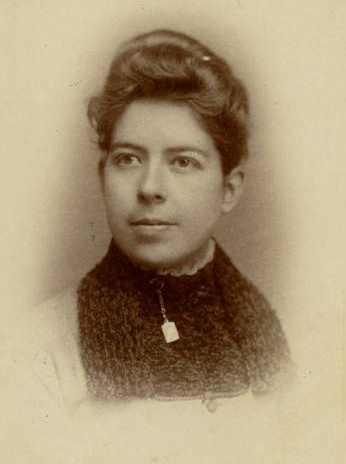In August 2019, the Archives & Special Collections received a Washington Digital Heritage grant to digitize, transcribe, and make available online nine journals written by the artist Abby Williams Hill (1861-1943). These journals focus on Hill’s travels throughout the United States between 1895 and 1906 and provide a unique female perspective on significant issues affecting the nation at that time, including education, tourism, and the rights of women, African Americans, Native Americans, and the working class. Over the next few weeks, we’ll be using the blog series to highlight each of the journals and their significance for researchers. Abstracts for all of the journals can be found here.
Two weeks ago we discussed Hill’s journal from a summer spent on Vashon Island in 1900. The third journal in our digital collection contains Hill’s writings from a year spent touring the United States with her children between 1901 and 1902. This journal is 950 pages long so we separated it into five parts online for easier access by researchers (see links to all five parts at the bottom of this post). There is also a daybook that covers the same period of time. The daybook contains very brief notes on Hill’s daily activities, which she used to inform her longer narrative-style entries in her journal.
Hill began her year-long trip in October 1901 with her two oldest children, Romayne and Ione. They traveled from Seattle by rail, stopping in many cities throughout the Midwest and on the East Coast, including Chicago, Cleveland, Boston, New York City, Washington D.C., Philadelphia, Baltimore, and other locations. Hill and the children visited monuments, museums, zoos, social settlements, industrial complexes, schools, and other sites during their travels, the details of which were meticulously recorded by Hill in her journal.
In February 1902, Hill and the children traveled south to Alabama, where they stayed at the Tuskegee Institute for ten days as guests of Dr. Booker T. Washington. They were there during the annual Farmer’s Conference and Hill attended numerous lectures and activities, again recording everything in her journal. These entries are a highlight of the collection, though researchers must take care to read them with Hill’s perspective as an upper middle class white woman in mind. Hill was so impressed with Booker T. Washington and what he had accomplished that when she was given the opportunity to name a mountain in the North Cascades in 1903, she named it Mt. Booker after him. At the end of her visit to Tuskegee Hill wrote, “I have never been anywhere so short a time that I learned to like so many people so well.”
From Alabama, the family traveled to New Orleans and then on to Bay St. Louis, Louisiana, where they stayed for five weeks while Hill’s son Romayne recovered from a bout of pneumonia. When he was feeling better, they continued west to Los Angeles, where they were joined in May 1902 by Hill’s younger daughters, Ina and Eulalie. After some sightseeing in the city, Hill and her four children embarked on a lengthy camping trip near Sequoia and Kings Canyon National Parks. She was thrilled by the scenery and the sequoia trees. She wrote,
“What thoughts these trees bring. What is a hundred years to them? Moses could have seen the General Grant [Tree] had he been in this forest. The oldest living thing. I fancied they would simply be a curiosity, but they look in every foot of their height, in every twisted branch, that they represent another age, that they have lived to remind us that all things belong to one plan, one system in which events serve one end and everyone contributes.”
Hill and the children continued their adventures, heading north to San Francisco, then into Oregon and Washington, where they set up camp at Trout Lake near Mount Adams on the north side of the Columbia River. The family remained there from late June until the end of August. Hill wrote of their adventures camping, rowing, and hiking in the wilderness, where there were lava formations, ice caves, waterfalls, and caverns to explore. She provides details of their daily life in Trout Lake, including the layout of their camp, the meals they cooked, the wildlife they encountered, and the friends they made. The last entries in this journal are written from Warrendale, Washington in October 1902, after which Hill likely returned home for the holidays.
Hill’s journals provide a rich and varied resource for scholars of all ages. Check back next week for the next installment in our series…Hill’s daybook from her trip to the North Cascades in 1903, where she was painting scenery for the Great Northern Railway.
This project was supported by a grant from the Washington State Library with funding from the Institute of Museum and Library Services.
Links to the United States Tour journal:
The Archives & Special Collections is currently unable to host in-person researchers. If you need assistance or would like to set up a virtual appointment, please email us at archives@pugetsound.edu.
By Laura Edgar, Assistant Archivist & Archivist for the Abby Williams Hill Collection



